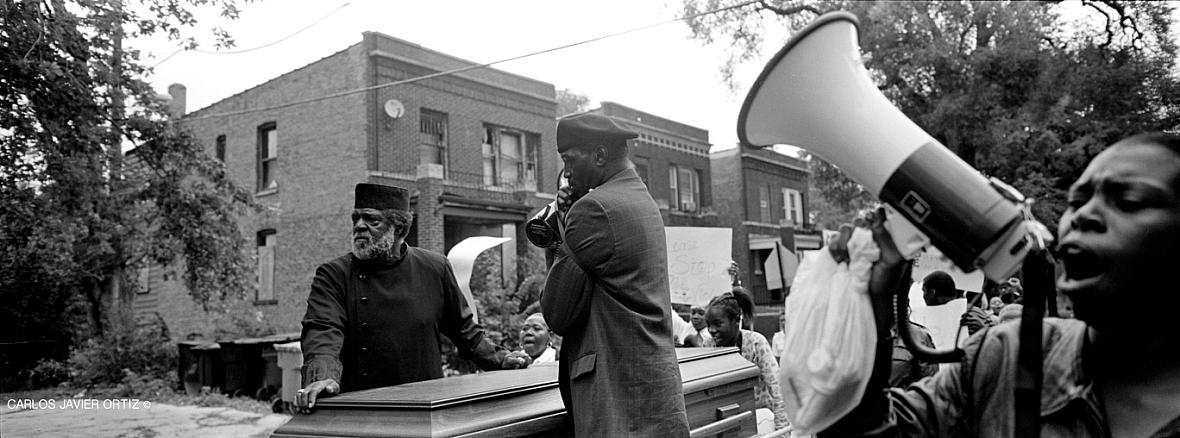Too Young to Die
Too Young to Die: "Examining a Lost Generation in America"
Photographer Carlos Javier Ortiz took the photographs below as part of a 2012 National Health Journalism Fellowship. They were published in the Chicago Reporter in January 2013. Ortiz has been chronicling the impact of violence on Chicago youth for six years. Other images in the project can be seen here. Carlos shared lessons he learned from this project in a blog post he wrote for Reporting on Health.
A previous installment: One Young Gun Violence Victim Beats the Odds

ʺIf we are to reach real peace in this world... we shall have to begin with children,” Mahatma Gandhi
In the photo to the left, community members, residents, business owners and church pastors marched through the 300 block of 69th St. in Chicago's South side in October 2012 after the shooting death of Darius Farley in the Greater Grand Crossing neighborhood to protest the overwhelming numbers of murders. By October 2012, Chicago had seen more than 118 murders on children and young people by guns. Since 2007, there had been 124 homicides in Greater Grand Crossing. The neighborhood covers about three square miles.
In the photo on the right, taken in September 2012 in the Auburn Greshman neighborhood, members of St. Sabina Church place a hand made wooden cross in the ground in an empty parking lot where a young man was murdered. More than 40 young people have been murdered in the Auburn Gresham neighborhood since 2006.
A war is underway in the United States today, with the nation’s youth suffering its most devastating consequences. It is an undeclared war, but it is as real and savage as any of the wars that claim the lives of soldiers in Afghanistan and Iraq. The casualties of this war come from a thousand bloody battles being waged nightly on the neighborhood streets of cities like Chicago, Philadelphia, and Los Angeles. Some victims are gang members; some are elementary school children, innocent bystanders walking down the street; while others are the intended victims. This undeclared war stems from a long history of social despair, inequality, poverty, gun violence, and the War on Drugs.
When one thinks of the most pressing health problems facing the United States today, we are likely to consider obesity, diabetes or cancer. However, for children and young people between 10 and 24 years of age, violence is the second leading cause of death. On average, 16 young people lose their lives to violence in the United States every day, usually with a gun. Many more suffer serious injuries from other forms of violence. And that’s not to mention the nearly infinite and incalculable health effects this poses for low-income, disproportionately minority youth and their families. According to Chicago Police Department figures, 238 people under 25 years of age were murdered in 2012 in Chicago (Chicago Redeye, 2012).
However, many more people were wounded by gunfire. Although shootings are difficult to estimate due to variation in reporting to the Chicago Police Department, data estimates from the Chicago Data Portal indicate at least 890 people under 25 were injured in gun related incidents in 2012.
More and more studies have shown the physiological and psychological effects of suffering and witnessing crimes, and more broadly of growing up in violence-plagued environments.
I truly believe that this project has tremendous potential to increase public awareness, promote understanding within affected communities, and stimulate constructive policy debate about the causes of, and solutions to, this ongoing tragedy. The purpose of my project is to humanize and personalize the stories of youth, families, and individuals who live with the aftermath of violence. Although many survivors live in fear, their stories are also about hope, love and resilience. My work illustrates the importance of maintaining our collective concern for our children’s future.

